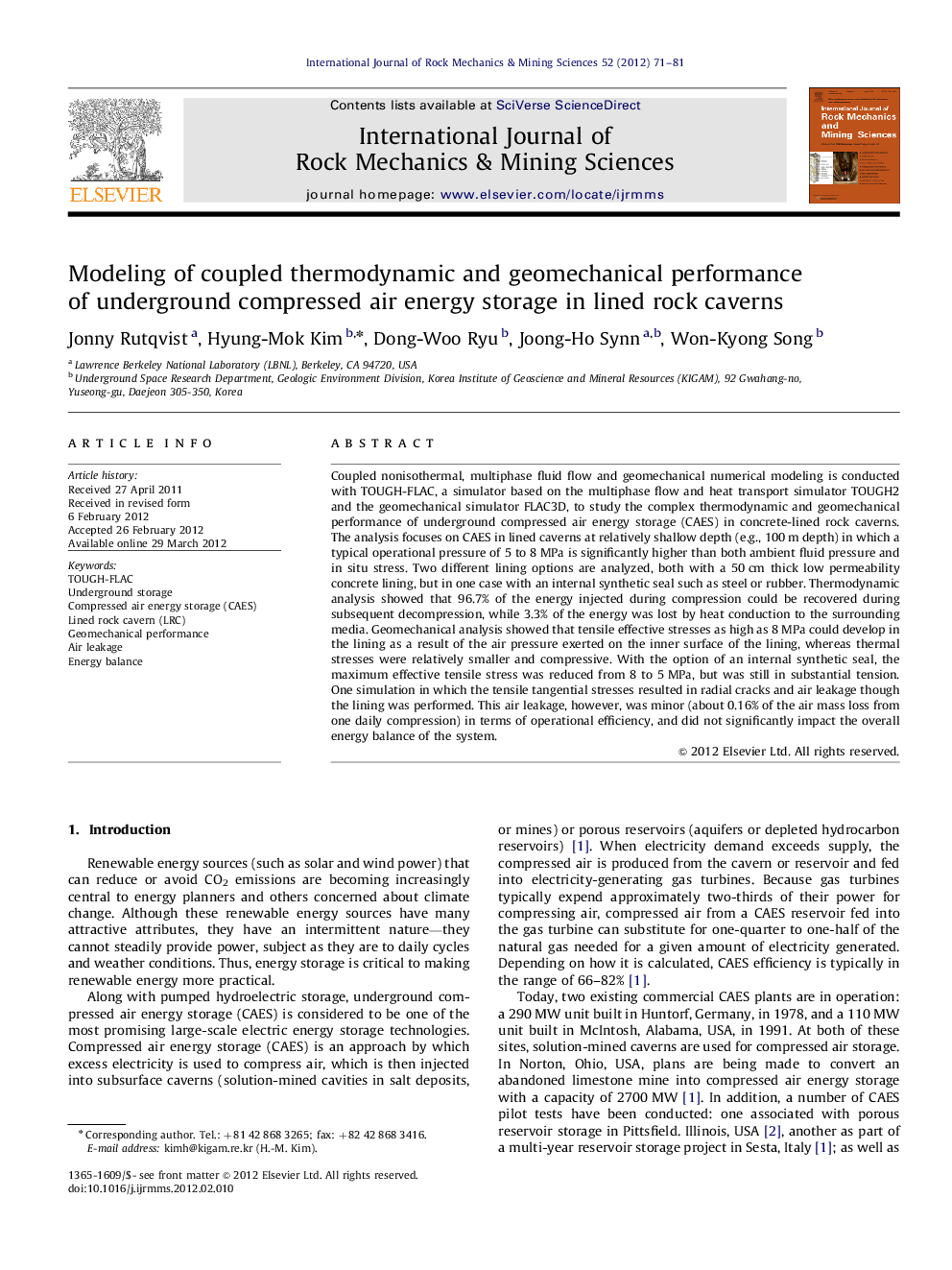| کد مقاله | کد نشریه | سال انتشار | مقاله انگلیسی | نسخه تمام متن |
|---|---|---|---|---|
| 809518 | 1468717 | 2012 | 11 صفحه PDF | دانلود رایگان |

Coupled nonisothermal, multiphase fluid flow and geomechanical numerical modeling is conducted with TOUGH-FLAC, a simulator based on the multiphase flow and heat transport simulator TOUGH2 and the geomechanical simulator FLAC3D, to study the complex thermodynamic and geomechanical performance of underground compressed air energy storage (CAES) in concrete-lined rock caverns. The analysis focuses on CAES in lined caverns at relatively shallow depth (e.g., 100 m depth) in which a typical operational pressure of 5 to 8 MPa is significantly higher than both ambient fluid pressure and in situ stress. Two different lining options are analyzed, both with a 50 cm thick low permeability concrete lining, but in one case with an internal synthetic seal such as steel or rubber. Thermodynamic analysis showed that 96.7% of the energy injected during compression could be recovered during subsequent decompression, while 3.3% of the energy was lost by heat conduction to the surrounding media. Geomechanical analysis showed that tensile effective stresses as high as 8 MPa could develop in the lining as a result of the air pressure exerted on the inner surface of the lining, whereas thermal stresses were relatively smaller and compressive. With the option of an internal synthetic seal, the maximum effective tensile stress was reduced from 8 to 5 MPa, but was still in substantial tension. One simulation in which the tensile tangential stresses resulted in radial cracks and air leakage though the lining was performed. This air leakage, however, was minor (about 0.16% of the air mass loss from one daily compression) in terms of operational efficiency, and did not significantly impact the overall energy balance of the system.
► Numerical modeling for underground CAES was presented.
► Coupled thermodynamic, multiphase flow and geomechanical analysis was performed.
► Low permeable internal seal reduced maximum tensile stresses in the concrete lining.
► Air leakage and energy balance of lined rock cavern were investigated.
► The feasibility of underground CAES at shallow depth was demonstrated.
Journal: International Journal of Rock Mechanics and Mining Sciences - Volume 52, June 2012, Pages 71–81